#yue shi han
Text
#hei yanjing#hei yan jing#black blindman#dmbj#the lost tomb#explore with the note#ultimate note#sand sea#tomb of the sea#reunion#reunion: the sound of the providence#the lost tomb reboot#yue shi han#yue shihan#liu yu ning#liu yuning#ji chen#baron chen#chen chuhe#chen chu he#repost wih the duration fixed
16 notes
·
View notes
Photo

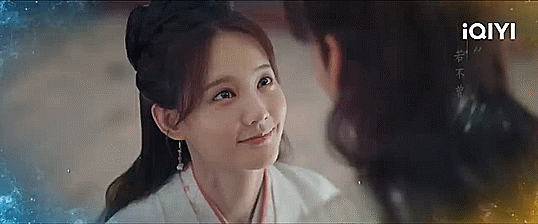
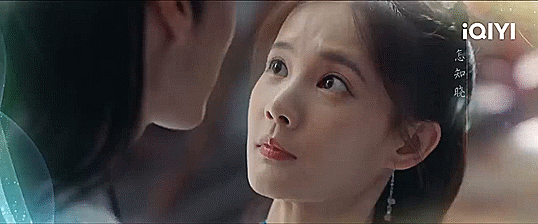
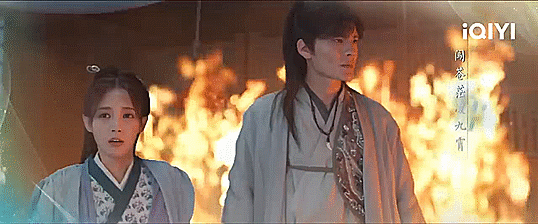
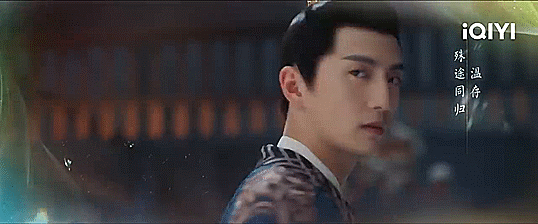
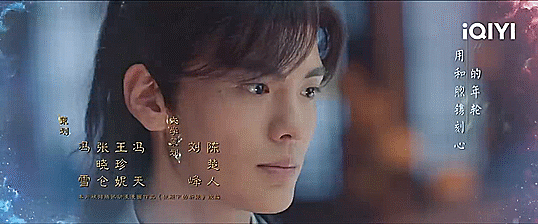
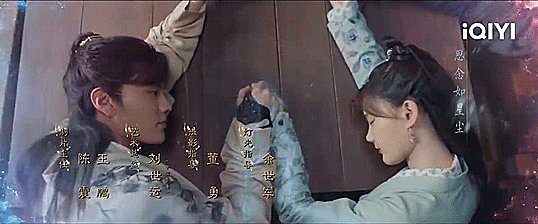



Cdrama: Warm on a Cold Night (2023)
Gifs of Intro of cdrama “Warm on a Cold Night”
【FULL】 李一桐化身飒气女捕快 携手毕雯珺高能探案 | 九霄寒夜暖 Warm on a Cold Night EP1 | 爱奇艺华语剧场
Watch this video on Youtube: https://www.youtube.com/watch?v=OMN3EL9HBBE
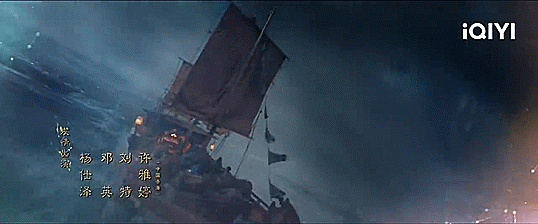
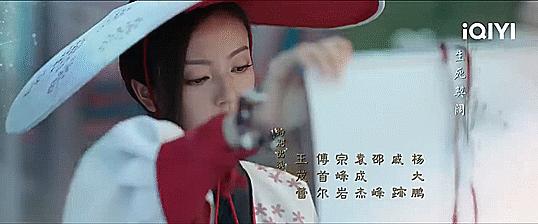
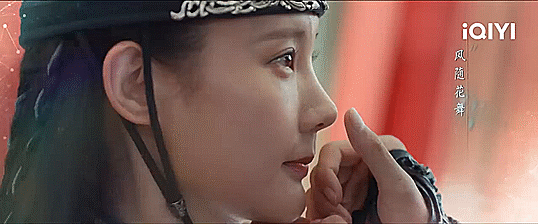
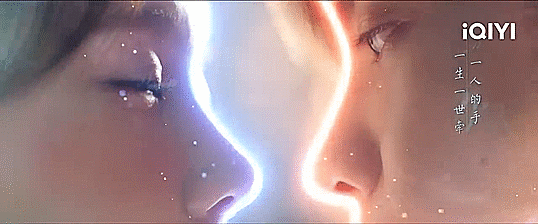
#Warm on a Cold Night#九霄寒夜暖#Warm Cold Night in the Nine Heavens#Jiu Xiao Han Ye Nuan#2023#Viki#iQiyi#youtube#cdrama#chinese drama#episode 1#1st episode#Li Yi Tong#Bi Wen Jun#Chen He Yi#He Rui Xian#Yang Shi Ze#Wang Mao Lei#Ma Yue#Deng Ying#Sonya Fu#Li Jing Yi
15 notes
·
View notes
Text
[Hanfu · 漢服]Chinese Late Warring States period(475–221 BC) Traditional Clothing Hanfu Based On Based On Chu (state)Historical Artifacts

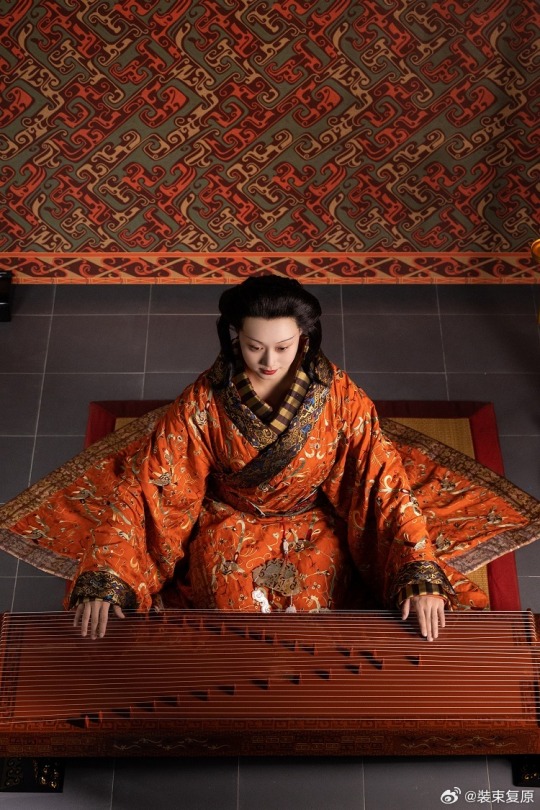
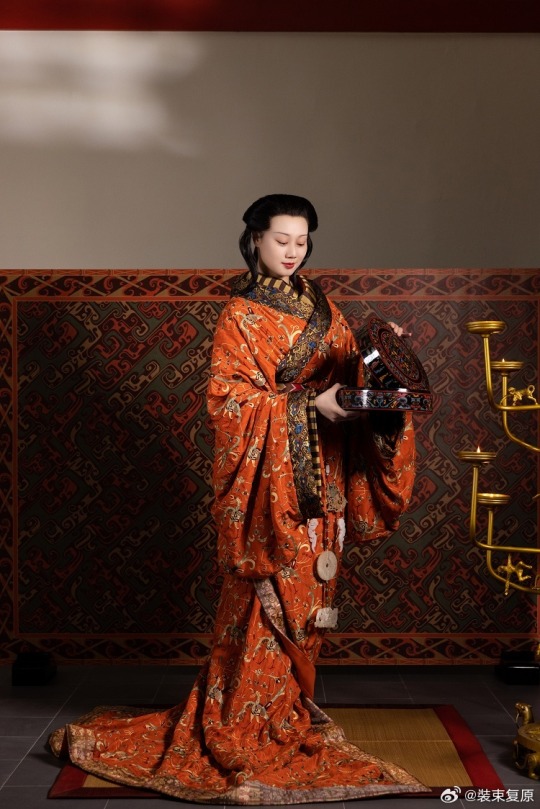
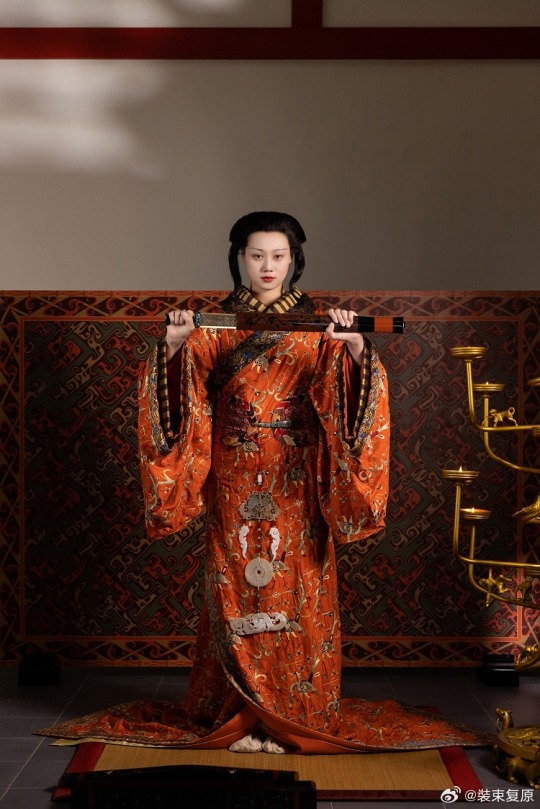
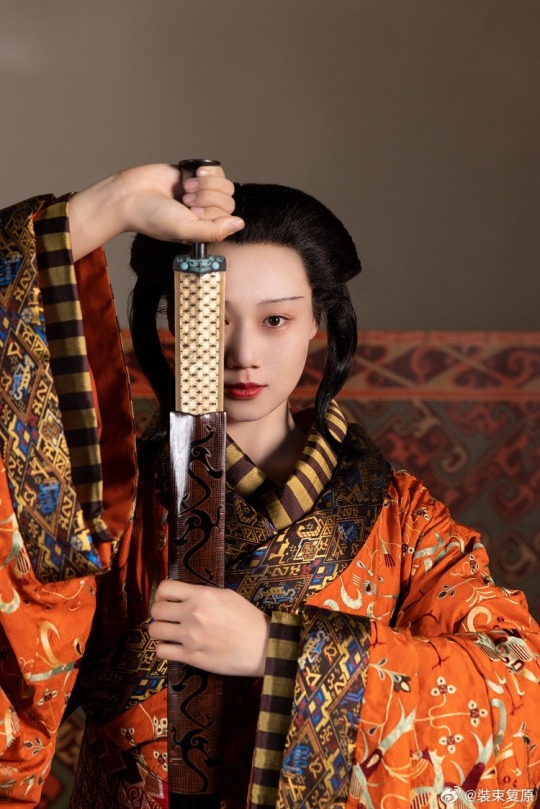
【Historical Artifact Reference】:
Late Warring States period(475–221 BC):Two conjoined jade dancers unearthed from Jincun, Luoyang,collected by Freer Museum of Art
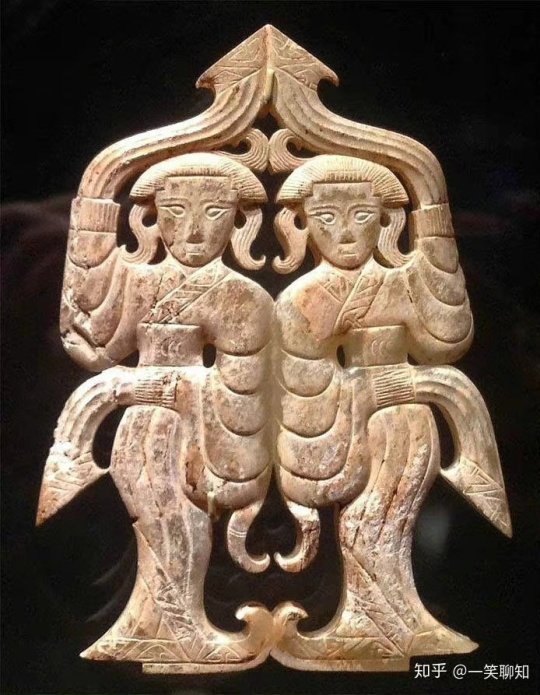
A similar jade dancer was also unearthed from the tomb of Haihunhou, the richest royal family member in the Han Dynasty, and was one of his treasures.

Warring States period, Eastern Zhou dynasty, 475-221 BCE,jade dancer by Freer Gallery of Art Collection.

Warring States period(475–221 BC)·Silver Head Figurine Bronze Lamp.Unearthed from the Wangcuo Tomb in Zhongshan state during the Warring States Period and collected by the Hebei Provincial Institute of Cultural Relics and Archaeology

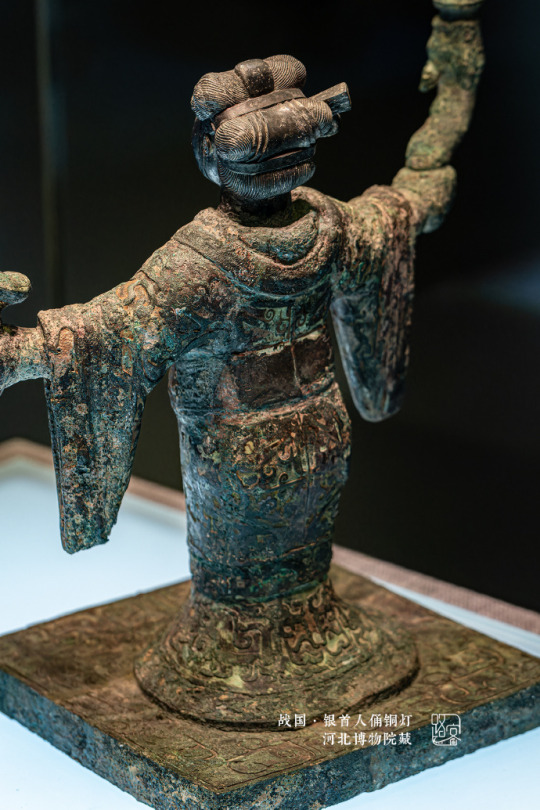
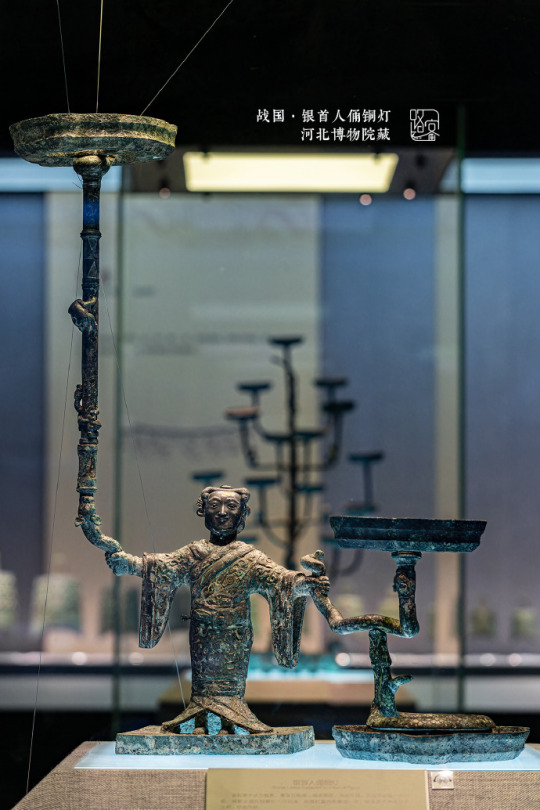
The figurine of a man dressed as a woman holds a snake in his hand, and 3 snakes correspond to 3 lamps.
Sword of Goujian/越王勾践剑:
The Sword of Goujian (Chinese: 越王勾践剑; pinyin: Yuèwáng Gōujiàn jiàn) is a tin bronze sword, renowned for its unusual sharpness, intricate design and resistance to tarnish rarely seen in artifacts of similar age. The sword is generally attributed to Goujian, one of the last kings of Yue during the Spring and Autumn period.
In 1965, the sword was found in an ancient tomb in Hubei. It is currently in the possession of the Hubei Provincial Museum.

【Histoty Note】Late Warring States Period·Noble Women Fashion
The attire of noblewomen in the late Warring States period, as reconstructed in this collection, is based on a comprehensive examination of garments and textiles unearthed from the Chu Tomb No. 1 at Mashan, Jiangling, as well as other artifacts from the same period.
During the late Warring States period, both noble men and women favored wearing robes that were connected from top to bottom. These garments were predominantly made of gauze, silk, brocade, and satin, with silk edging. From the Chu Tomb No. 1 at Mashan, there were discoveries of robes entirely embroidered or embroidered fragments. The embroidery technique employed was known as "locked stitches," which gave the patterns a three-dimensional, lively appearance, rich in decoration.
The two reconstructed robes in this collection consist of an inner robe made of plain silk with striped silk edging, and an outer robe made of brocade, embroidered with phoenixes and floral patterns, with embroidered satin edging. Following the structural design of clothing found in the Mashan Chu Tomb, rectangular fabric pieces were inserted at the junction of the main body, sleeves, and lower garment of the robe. Additionally, an overlap was made at the front of the main body and the lower garment to enlarge the internal space for better wrapping around the body curves. Furthermore, the waistline of the lower garment was not horizontal but inclined upward at an angle, allowing the lower hem to naturally overlap, forming an "enter" shape, facilitating movement.
The layered edging of the collars and sleeves of both inner and outer robes creates a sense of rhythm, with the two types of brocade patterns complementing each other, resulting in a harmonious effect. Apart from the robes, a wide brocade belt was worn around the waist, fastened with jade buckle hooks, and adorned with jade pendants, presenting an elegant and noble figure.
The reconstructed hairstyle draws inspiration from artifacts such as the jade dancer from the late Warring States period unearthed at the Marquis of Haihun Tomb in Nanchang, and the jade dancer from the Warring States period unearthed at Jin Village in Luoyang. It features a fan-shaped voluminous hairdo on the crown, with curled hair falling on both sides, and braided hair gathered at the back. The Book of Songs, "Xiao Ya: Duren Shi," vividly depicts the flowing curls of noblewomen during that period. Their images of curly-haired figures in long robes were also depicted in jade artifacts and other relics, becoming emblematic artistic representations.
The maturity and richness of clothing art in the late Warring States period were unparalleled in contemporary world civilizations, far beyond imagination. It witnessed the transition of Chinese civilization into the Middle Ages. The creatively styled garments and intricate fabric patterns from the Warring States period carry the unique essence, mysterious imagination, and ultimate romanticism of that era, serving as an endless source of artistic inspiration.
--------
Recreation Work by : @裝束复原
Weibo 🔗:https://weibo.com/1656910125/O6cUMBa1j
--------
#chinese hanfu#Late Warring States Period#Warring States period(475–221 BC)#hanfu#hanfu accessories#chinese traditional clothing#hanfu_challenge#chinese#china#historical#historical fashion#chinese history#china history#漢服#汉服#中華風#裝束复原
173 notes
·
View notes
Text
Here's our roster!!!
These are all 32 pairs (or trios!) that will be competing in this bracket :>
In no particular order, they are,,,
1 - Barry Bluejeans and Lup (Blupjeans) from The Adventure Zone
2 - Aziphrale and Crowley (Ineffable Husbands) from Good Omens
3 - Phoenix Wright and Miles Edgeworth (Narumitsu) from Ace Attorney
4 - Hua Cheng and Xie Lian (Hualian) from Heaven Official's Blessing
5 - Catra and Adora (Catradora) from She-ra
6 - Princess Bubblegum and Marceline (Bubbline) from Adventure Time
7 - Merlin and Arthur (Merthur) from Merlin
8 - Dean Winchester and Castiel (Destiel) from Supernatural
9 - Rashmi Jamil and Amelie Macon (Rashmelie) from Entropic Float
10 - Tim Drake and Conner Kent (Timkon) from DC
11 - Wei Wuxian and Lan Wanji (Wangxian) from Mo Dao Zu Shi
12 - Raine and Eda (Raeda) from The Owl House
13 - Mike Wheeler and Will Byers (Byler) from Stranger Things
14 - Pearl and Rose Quartz (Pearlrose/Rainbow Quartz) from Steven Universe
15 - Benjamin Kondraki and Alto Clef (Clefdraki) from SCP
16 - Dream/Morpheus and Hob Gadling from The Sandman
17 - Percy Jackson and Annabeth Chase (Percabeth) from PJO
18 - Madoka and Homura (Madohomu) from Madoka Magica
19 - James T. Kirk and Spock (Spirk) from Star Trek
20 - Han Sooyoung and Kim Dokja and Yoo Joonghyuk (Yoohankim) from ORV
21 - Utena and Anthy (Utenanthy) from Revolutionary Girl Utena
22 - Red and Blue (Reguri) from Pokemon
23 - Nozomi and Mizore (Nozomizo) from Liz and the Blue Bird
24 - Roy Mustang and Riza Hawkeye (Royai) from Fullmetal Alchemist Brotherhood
25 - Kevin Ryan and Javier Esposito (Rysposito) from Castle
26 - Basil and Sunny (Sunflower) from Omori
27 - Candace and Jeremy (Canderemy) from Phineas and Ferb
28 - Gideon and Harrow (Griddlehark) from The Locked Tomb
29 - Dana Scully and Fox Mulder (Msr) from The X Files
30 - Naruto and Sasuke (Narusasu) from Naruto (replacing jonmartin)
31 - Akane Kurashiki & Junpei (Junepei) from Zero Escape
32 - Yue Wuhuan and Song Qingshi (Yuesong) from Mistakenly Saving the Villain
Bracket will be out ,,, some time this week <3 (dont trust me)
#update: wait what.#okay nvm!!! they got in and i didnt even have to rig the bracket! epic!#how did i not notice? ...dont ask. thats a touchy subject /j
227 notes
·
View notes
Note
a o e i i er ai ei ao ou an en ang eng ong i ia iao ie iu ian in iang ing iong u ua uo uai ui uan un uang ueng ü üe üan ün a o e er ai ao ou an en ang eng yi ya yao ye you yan yin yang ying yong wu wa wo wai wei wan wen wang weng yu yue yuan yun b ba bo bai bei bao ban ben bang beng bi biao bie bian bin bing bu p pa po pai pei pao pou pan pen pang peng pi piao pie pian pin ping pu m ma mo me mai mei mao mou man men mang meng mi miao mie miu mian min ming mu f fa fo fei fou fan fen fang feng fu d da de dai dei dao dou dan den dang deng dong di diao die diu dian ding du duo dui duan dun t ta te tai tei tao tou tan tang teng tong ti tiao tie tian ting tu tuo tui tuan tun n na ne nai nei nao nou nan nen nang neng nong ni niao nie niu nian nin niang ning nu nuo nuan nü nüe l la le lai lei lao lou lan lang leng long li lia liao lie liu lian lin liang ling lu luo luan lun lü lüe g ga ge gai gei gao gou gan gen gang geng gong gu gua guo guai gui guan gun guang k ka ke kai kei kao kou kan ken kang keng kong ku kua kuo kuai kui kuan kun kuang h ha he hai hei hao hou han hen hang heng hong hu hua huo huai hui huan hun huang z za ze zi zai zei zao zou zan zen zang zeng zong zu zuo zui zuan zun c ca ce ci cai cao cou can cen cang ceng cong cu cuo cui cuan cun s sa se si sai sao sou san sen sang seng song su suo sui suan sun zh zha zhe zhi zhai zhei zhao zhou zhan zhen zhang zheng zhong zhu zhua zhuo zhuai zhui zhuan zhun zhuang ch cha che chi chai chao chou chan chen chang cheng chong chu chua chuo chuai chui chuan chun chuang sh sha she shi shai shei shao shou shan shen shang sheng shu shua shuo shuai shui shuan shun shuang r re ri rao rou ran ren rang reng rong ru rua ruo rui ruan run j ji jia jiao jie jiu jian jin jiang jing jiong ju jue juan jun q qi qia qiao qie qiu qian qin qiang qing qiong qu que quan qun x xi xia xiao xie xiu xian xin xiang xing xiong xu xue xuan xun
NAKU 🫵
40 notes
·
View notes
Text
Completed 'Surname' Polls
This is where I take several characters from different Chinese media (mostly cnovels and cdrama) and run a poll on which one is the 'best'. What does best mean? It's up to you! Whether you love them, are intrigued by their characters, love to hate them, or they're your '2 second blorbos whose personality you made up wholesale', these are all reasons for you to vote for your favs!
NB: the surnames are not exactly the same in all the cases, as often they will be a different character. I am, however, grouping them all together otherwise things got more complicated.
This post is for the polls which have finished running and can no longer be voted in (since I have realised that I'm quickly approaching the limit for hyperlinks in the original masterlist).
If you want to see the currently live polls, they can be found here
Finished polls: Cao/Wei/Guo/Chen/Ye/Qiao/Yu/Xue/Tang/Jiang/Su/Gao/Mei/Lin/Wu/Sun/Liu/Di/Zhang/Ying/Mo/Li/Song/Yan/Xiao/Pei/Hua/Xie/Mu/Qi/Shen/Lan/Fang/Luo /Huo/Xu/Wang/Ming/Fan/Yuan/Feng/Bai/Jin/Meng/Yun/Zhao/Wen/Zhou/Yang/Shang/Yue/Sheng/Ouyang/Lu/Ling/Hu/Gu/Ding
Shi/Hong/Zhu/Yi/Cheng/Zhan/Xia/Cui/Chu/Lei/Ma/Liang/Jing/Zhi/An/Nie/Hao/Qin/Han/Guan/Zhuge/Jia/Ning/Xiang/Huang/Fei/Ruan/Dong/He/Baili/Long/Duan/Zhen/Wan/Qiu/Dongfang/Du/Bi/Jiao/Zhong/
4 notes
·
View notes
Text
Some art I did of Lanling Wang for My AU
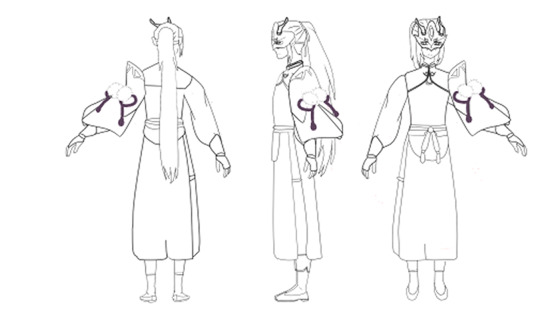

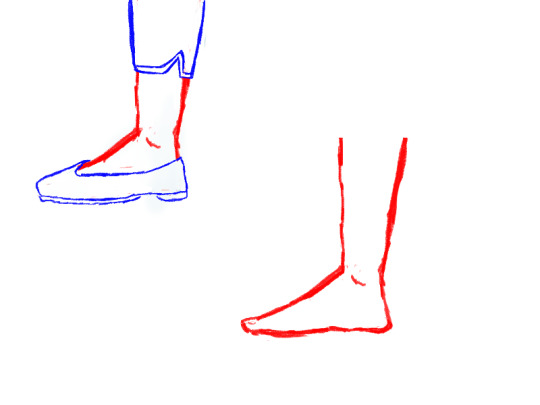
The program I used was Clip Studio Paint. Anyway, here is a character profile/description of the character from my Deviantart here (from the colored one here) https://www.deviantart.com/sakuraofchaos/art/Lanling-Wang-Character-Sheet-LB3-fix-it-fic-AU-967151274
Disclaimer: I own nothing. This character belongs to Type Moon and Kinoko Nasu.
If anyone wants to know why I made a few design changes here:
-The hairstyle: the character was originally supposed to have long black hair and the real Prince of Lanling didn't cut his hair due to the Confucian belief of a person's body being a gift from their parents. It meant that men wore their hair as long as women. If you cut your fingernails or shaved your body hair, it had to be with you at all times (yes, weird I know, but they did invent nail clippers and facial and body hair removal in the Han Dynasty and still stuck to those rules). I know historically, he would've had his hair tied in a top knot, but my AU is inspired by MXTX and a good chunk of her male characters have ponytails. Also, I gave him a hair tie in purple but a different shade from his mask tie.
-The mask: it was too hard to draw honestly, but I stuck to as close as canon as possible and made some changes.
-The overall outfit: his first ascension looks more comfy but I gave him the belt from his second ascension. I did remove some glove detailing as hands overall are hard for me to draw.
-The character overall: He has a different master as Akuta/ Yu is his fake master. His true master is Qin Shi Huang (the one from proper human history) who was able to manage to get his real body in the Lostbelt without changing it thanks to the help of Ashiya Douman.
Akuta/Yu was originally his master yet QSH stole him away from her. Despite that, he is able to age normally somehow due to the Lostbelt shortening his life by making him only live for 23 years. Through that time, he managed to have a wife through an arranged marriage by QSH named Lady Zheng and a son named Gao Yue thanks to the help of the Lostbelt's technology. Many of which was founded through his adoptive mother, Gao Meiying.
-His personality: Despite everything, Gao Changgong is known for being cold and cruel like his younger brother Gao Yanzong. The main difference is that Changgong is less arrogant and more aloof yet insecure due to the fact that QSH favors Yanzong over him. He wears a mask to hide the "ugly face" that QSH refers to often because he takes everything QSH says about him to heart. Yet he is not allowed to wear it in court because QSH wants his many followers to belittle his "abuser." It has lead QSH to get others to scar both his forehead through stoning and his back through whipping. Gao Changong can be kind at times like his canon counterpart, yet he hides it as he is not allowed to act kind to others because of his master. Yet he does show that side but only to his few family members which he trusts. Mainly his wife, mother, and son. He is still capable of murder and has murdered over 500 people (including women and children) in the hands of Qin Shi Huang for his (the emperor's) selfish pleasures of immortality.
#anime#fate series#fate grand order#lanling wang#my au#another lostbelt 3#ALB3#abuse cw#murder cw#in the description#my art
4 notes
·
View notes
Text

Okay so I am technically on hiatus however I want to be a squirrel and burrow and collect all the starters so I can post them when I come back so with that in mind. . .like and comment for starters from my babes !
Aloth Corfiser (0/??)
Anya Forger (0/??)
Arthur Pendragon (0/??)
Aziraphale (0/??)
Ban Yue (0/Xie Lian)
Baymax (0/??)
Beelzebub (0/??)
Cao Weining (0/??)
Choi Yeon Woo (0/??)
Dewey Duck (0/??)
Dizzy Tremaine (0/??)
Edrisa Tanaka (0/??)
Gabriel (0/Crowley, Jack)
GIR (0/??)
Hua Cheng (0/Xie Lian, He Xuan, Shi Qingxuan, Mu Qing)
Julian Alfred "Jaskier" Pankratz (0/??)
Karl Heisenberg (0/??)
Lan Jingyi (0/Wei Wuxian)
Lan Xichen (0/Wei Wuxian, Nie Huaisang, Jin Guangyao)
Legolas Thranduilison (0/??)
Luo Binghe (0/Qinghua)
Neil Perry (0/??)
Pete Phongsakorn Saengtham (0/??)
Peter Regis (0/??)
Prince Justin (0/??)
Seo Haebom (0/??)
Seok Han-Seong (0/??)
Taka (0/??)
Vax'ildan Vessar (0/??)
Wen Ning (0/??)
Wu Xi (0/??)
Xiao Xingchen (0/??)
Xu Youyi (0/??)
Zhang Chengling (0/??)
10 notes
·
View notes
Text
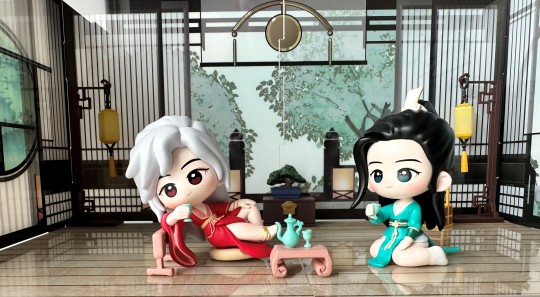


Junzhe Extended Universe (JZEU) Fig Index
These figs celebrate the acting and filming history of both Zhang Zhehan and Gong Jun. I've noted the character(s) in italics next to each post for easy searching. I'll also add a character listing for each actor at the bottom of the post since it's easy to get individual characters mixed up (at least by me!)
Part 3
Chulian on Lake - Dong Fang Yuechu & Qing Lian
Xu Si is Rising with the Wind (Handcrafted) - Xu Si
Part 2
Pearl of the East China Sea - (young) Lin Shu
Home Country World - Han Ye
Your Highness, Calm Down - Han Ye
No Regrets - Han Ye
Masked Prince - Han Ye
White and Gold Han Ye - Han Ye
Black and Gold Han Ye - Han Ye
Long Feiye Motioning his Guard Forward - Long Feiye
Meet Han Ye in the Rain (Official) - Han Ye
I See You Han Ye (Official) - Han Ye
Niuniu Wants to Fight - Xu Jin
Prince Han Ye (Handcrafted) - Han Ye
Little Sugar Man - Zhong Wumei
Little Daoist Priest - Dong Fang Yuechu
Niuniu with Bun - Xu Jin
Little Jade Daoist - Dong Fang Yuechu
Moonlight Night - Long Feiye
Yuechu Yin Yang Landscape Figures - Dong Fang Yuechu
Small Winecup Qinglian - Xiao-Zhe
Accidental Medical Exam - Lingyue - Ling Rui & Wang Yue
Night Night - Long Feiye
Dong Fang Yuechu (Handcrafted) - Dong Fang Yuechu
Marilyn Ming Xia - Ming Xia
Battle Damaged Niuniu - Xu Jin
Tianshu Beichen - Dog's Blood Drama - Long Feiye & Han Ye
Daoist Priest with Sugar Gourd - New Year's JZEU Series (13) - Dong Fang Yuechu
Fifth Sister - Zhong Wumei
Prince Rich - Han Ye
Princess Xixi - Xia Yanxi
Incomparably Beautiful Hair - New Year's JZEU Series (12) - Ji Fa
Peerless Little Prince - New Year's JZEU Series (11) - Zhong Wumei
Master Gong Xue - New Year's JZEU Series (10) - Wei Ying
Spicy Police Flower - New Year's JZEU Series (9) - Huang Weiping
Part 1
Early Mid-Autumn Festival: Moon Rabbit Lantern Daoist - Dong Fang Yuechu
Clever Little Daoist - Dong Fang Yuechu
Cool Little Daoist - Dong Fang Yuechu
Zhongpei - Zhong Wumei & Pei Yuntian
The Bravest - For Your Safety - Zheng Zhi
The Flaming Heart - I'm Always Here - Huo Yan
Lingyue Love at First Sight - Ling Rui & Wang Yue
Early Mid-Autumn Festival: Sweet Tangyuan Little Daoist - Dong Fang Yuechu
Genius Investor - Xu Si
Xiao Yue is Coming - Wang Yue
Ink and Wash Daoist Priest - Dong Fang Yuechu
Niuniu Flying a Kite - Xu Jin
War-Damaged Prince - Han Ye
Bright Boy - (young) Lin Shu
Firefighter Huo Yan - Huo Yan
Graceful Prince - Han Ye
Don't Go to Work, I'll Take Care of You - Zhao Fanzhou & Zhang Min
Minguo Military Husbands - Ming Xia & Fang Yan
Han Ye with Sword - Han Ye
XuXu - Xu Jin & Xu Si
Irregular Daoist - Dong Fang Yuechu
A-Han and Xiao-Zhe Drinking Wine - A-Han & Xiao-Zhe
A-Han and Da Shixiong - A-Han & Da Shixiong
Pajama Party - Fang Yan (cross posted from Junzhe fig index)
Tanghulu Niuniu - New Year's JZEU Series (2) - Xu Jin
Xue Shao - New Year's JZEU Series (1) - Xue Shao
Xiaohui Lang - Xu Jin
Jade Waist Slave - Xue Shao
Han Ye and Ji Fa Hidden Knife - Han Ye & Ji Fa
Han Ye and Xu Jin Battle Couple - Han Ye & Xu Jin
Lingyue - Teddy Bear - Ling Rui & Wang Yue
Lingyue - Delivery - Ling Rui & Wang Yue
Hamburger Xu Si - Xu Si
Bedtime Game - Fang Yan (cross posted from Junzhe fig index)
Firefighters - Huo Yan & Zheng Zhi
Fat Head Qinglian - Xiao-Zhe
Sweet Shenping - Lin Shen & Huang Weiping
Prince Han Ye on Horseback - Han Ye
Luminous Club - Fang Yan & Gu Chijun
Here's the listings of the TV series / films for each actor, followed by the character played. Thanks to Wikipedia for basic information as well as general Google and Twitter searching.
Character List - Zhang Zhehan
Why Love You: Xia Yanxi
Ni Shi Hen Mei: Xiao Zhi
Love For Hope: Zou Xiang
Eager to Create: Ah Le
Haunting Love: Li Ming Yan
Crazy for Palace: Xiao Hao
Palace 3: The Lost Daughter: Sun Heli
Incisive Great Teacher: Jin Renbin
Cosmetology High: Pei Yuntian
The Romance of the Condor Heroes: Ye Lu Qi
Crazy for Palace 2: Xiao Hao
Love YunGe from the Desert: Liu Xu
Nirvana in Fire: (young) Lin Shu
Ban Shu Legend: Wei Ying
ACG Hero: Zhang Wei
Decoded: Han Bing
Demon Girl (I and II): Ming Xia
Happy Mitan: (cameo) Dian Xiaoer
Above the Clouds: Ke Luo
Legend of Yunxi: Long Feiye
The Bravest: Zheng Zhi
Brother (short film): Wang Yue
Chang Dao Bing Cha (short film): Xiao Fei
Mi Fang (short film): Xiao Fei
Mian Ju (short film): Xiao Fei / Xue Shao
Everyone Wants to Meet You: Zhang Min
The Blooms at Ruyi Pavilion: Xu Jin
Word of Honor: Zhou Zishu
1921: Xiao Zisheng
(TBD) The Second Sight Fall in Love: Yang Jingyi
(TBD) Castle in the Time: Gu Chijun
(TBD) Zhao Ge: Ji Fa
(TBD) Retro Detective: Huang Weiping
Character List - Gong Jun
Sword Chaos: Bi Lu
Lost Love in Times: Yuan Che
Advance Bravely: Xia Yao
Unique Lady (I & II): Zhong Wumei
Flavor It’s Yours: Lu Weixun
The Love Equations: Zhao Fanzhou
Begin Again: Ling Rui
Word of Honor: Wen Kexing
The Player: Ren Yixia
The Flaming Heart: Huo Yan
Shining Like You: Fang Yan
Dream Garden: Lin Shen
Legend of Anle: Han Ye
Rising with the Wind: Xu Si
Fox Spirit Matchmaker: Yue Hong: Dong Fang Yuechu
[go back to Master Fig Index]
#jzeu#junzhe extended universe#junzhe#zhang zhehan#gong jun#word of honor#word of honor cast#shl cast#shl#figthusiast#I still can't believe I have 4 fang yan figs#yes two of them are zebras
3 notes
·
View notes
Note
Ji ji fu ji ji
a o e i i er ai ei ao ou an en ang eng ong i ia iao ie iu ian in iang ing iong u ua uo uai ui uan un uang ueng ü üe üan ün a o e er ai ao ou an en ang eng yi ya yao ye you yan yin yang ying yong wu wa wo wai wei wan wen wang weng yu yue yuan yun b ba bo bai bei bao ban ben bang beng bi biao bie bian bin bing bu p pa po pai pei pao pou pan pen pang peng pi piao pie pian pin ping pu m ma mo me mai mei mao mou man men mang meng mi miao mie miu mian min ming mu f fa fo fei fou fan fen fang feng fu d da de dai dei dao dou dan den dang deng dong di diao die diu dian ding du duo dui duan dun t ta te tai tei tao tou tan tang teng tong ti tiao tie tian ting tu tuo tui tuan tun n na ne nai nei nao nou nan nen nang neng nong ni niao nie niu nian nin niang ning nu nuo nuan nü nüe l la le lai lei lao lou lan lang leng long li lia liao lie liu lian lin liang ling lu luo luan lun lü lüe g ga ge gai gei gao gou gan gen gang geng gong gu gua guo guai gui guan gun guang k ka ke kai kei kao kou kan ken kang keng kong ku kua kuo kuai kui kuan kun kuang h ha he hai hei hao hou han hen hang heng hong hu hua huo huai hui huan hun huang z za ze zi zai zei zao zou zan zen zang zeng zong zu zuo zui zuan zun c ca ce ci cai cao cou can cen cang ceng cong cu cuo cui cuan cun s sa se si sai sao sou san sen sang seng song su suo sui suan sun zh zha zhe zhi zhai zhei zhao zhou zhan zhen zhang zheng zhong zhu zhua zhuo zhuai zhui zhuan zhun zhuang ch cha che chi chai chao chou chan chen chang cheng chong chu chua chuo chuai chui chuan chun chuang sh sha she shi shai shei shao shou shan shen shang sheng shu shua shuo shuai shui shuan shun shuang r re ri rao rou ran ren rang reng rong ru rua ruo rui ruan run j ji jia jiao jie jiu jian jin jiang jing jiong ju jue juan jun q qi qia qiao qie qiu qian qin qiang qing qiong qu que quan qun x xi xia xiao xie xiu xian xin xiang xing xiong xu xue xuan xun
6 notes
·
View notes
Text
忘川风华录 Cheat Sheet - PRE-QIN
Character list for the music project/game Wang Chuan Feng Hua Lu
Created solely for my own convenience
All images etc taken from the game's official website
Info taken from Wikipedia
Mao-mao not included, sowwy
姜太公 | Jiang Taigong | Khương Thái Công
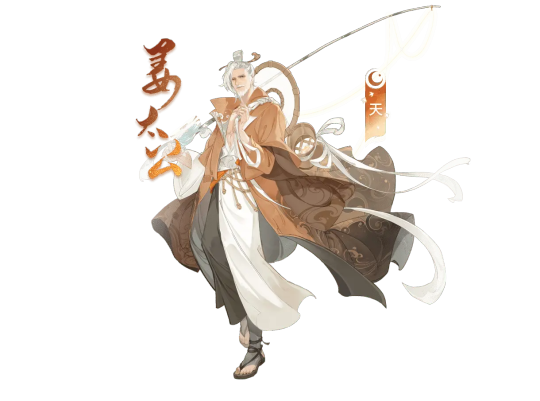
1128 BC - 1015 BC
Also known as Jiang Ziya / Taigong Wang / Lǚ Wang
General, strategist to King Wu of Zhou, helped establish the Zhou Dynasty
Song: Gui Diao Yin
Also appears in: Kuang Gu Hui Xiang
In-game rarity: 天
屈原 | Qu Yuan | Khuất Nguyên
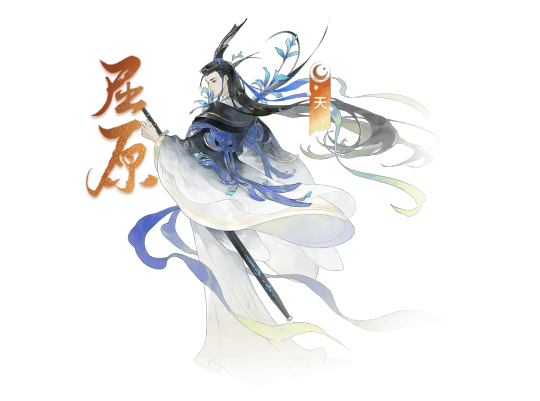
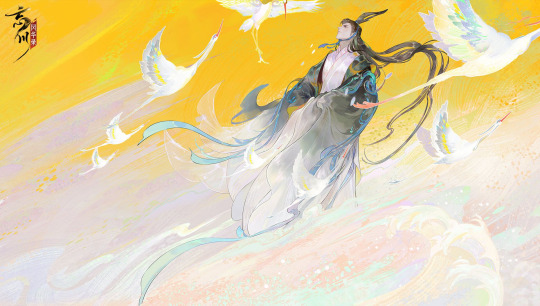
c. 340 BC – c. 278 BC
Poet, author of Li Sao, one of the first verse writers in ancient China
Theme song: N/A
Also appears in: Kuang Gu Hui Xiang
In-game rarity: 天
韩非 | Han Fei | Hàn Phi
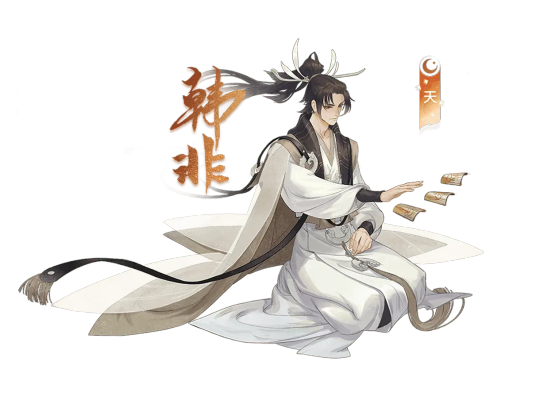

c. 280 BC – c. 233 BC
Philosopher of the Legalist school, author of Han Feizi
Song: Shi Fei
Also appears in: Kuang Gu Hui Xiang
In-game rarity: 天
西施 | Xi Shi | Tây Thi
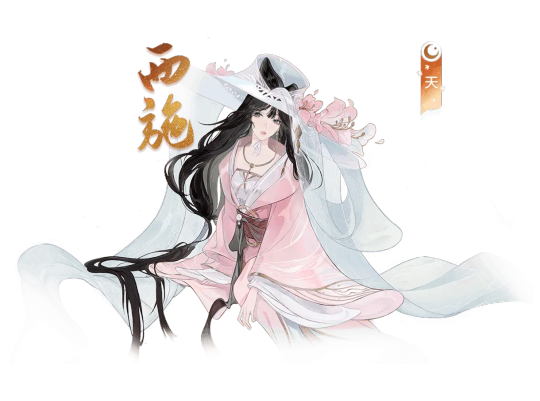
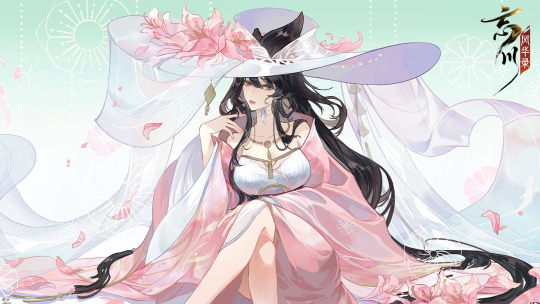
One of ancient China's Four Beauties
Given to Fuchai which allegedly led to the fall of the State of Wu
Song: Qing Guo
In-game rarity: 天
范蠡 | Fan Li | Phạm Lãi
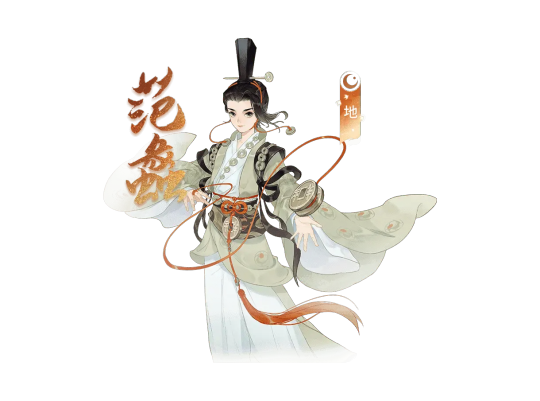
Strategist of Yue (Warring States)
(According to legends) discovered Xi Shi and later lived with her after the fall of Wu
Song: N/A
In-game rarity: 地
荆轲 | Jing Ke | Kinh Kha

Died 227 BC
Retainer of Yan (Warring States)
Attempted to assassinate Qin Shi Huang
Song: Yi Shui Jue
Also appears in: Kuang Gu Hui Xiang
In-game rarity: 地
高渐离 | Gao Jianli | Cao Tiệm Ly
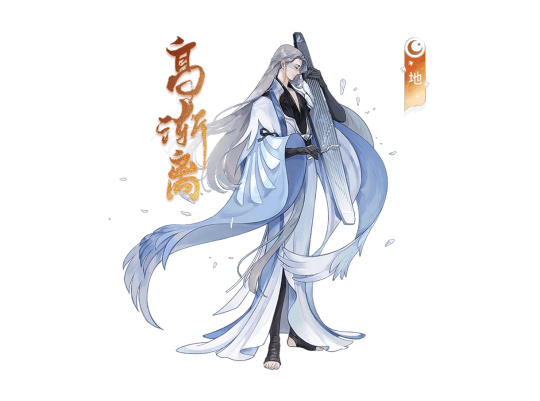
Musician of Yan (Warring States), friend of Jing Ke
Also attempted to assassinate Qin Shi Huang
Song: Yi Shui Jue
Also appears in: Kuang Gu Hui Xiang
In-game rarity: 地
干将 | Gan Jiang | Can Tương
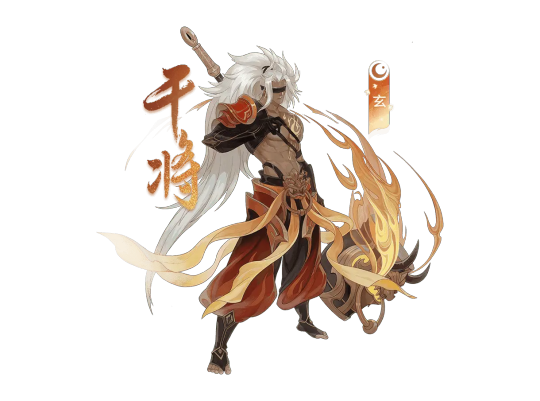
Part of a swordsmith couple during the Spring and Autumn period
Forged a pair of swords that also bore their names
Song: Wei Jian
Also appears in: Kuang Gu Hui Xiang
In-game rarity: 地
夫差 | Fuchai | Phù Sai
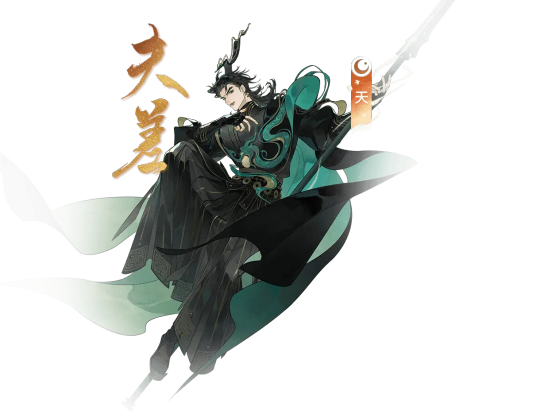
Reigned 495 BC – 473 BC
Last king of Wu (Spring and Autumn period)
Responsible for capturing and releasing Goujian, leading to the fall of his state
Song: Wen Jian Chun Qiu
Also appears in: Kuang Gu Hui Xiang
In-game rarity: 天
勾践 | Goujian | Câu Tiễn
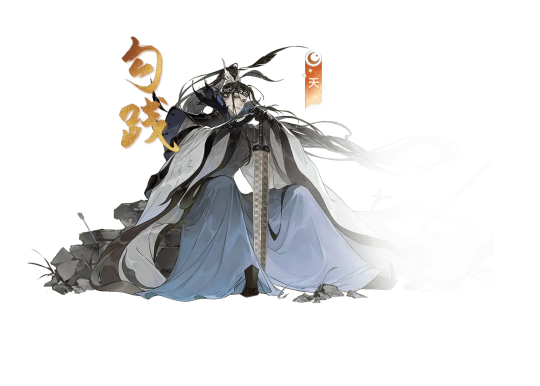
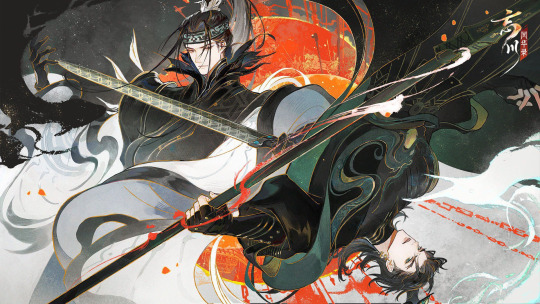
Reigned 496 BC – 465 BC
King of Wu (Spring and Autumn period)
Exacted revenge on and defeated Wu
Song: Wen Jian Chun Qiu
Also appears in: Kuang Gu Hui Xiang
In-game rarity: 天
伍子胥 | Wu Zixu | Ngũ Tử Tư
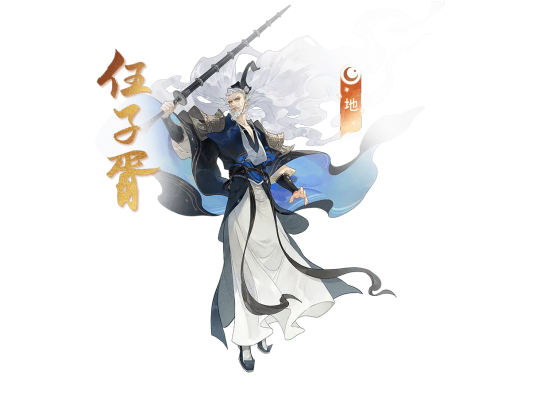
Died 484 BC
General and politician of Wu (Spring and Autumn period)
First served King Helü of Wu, was not entrusted by King Fuchai
Song: N/A
Also appears in: Wen Jian Chun Qiu
In-game rarity: 地
白起 | Bai Qi | Bạch Khởi
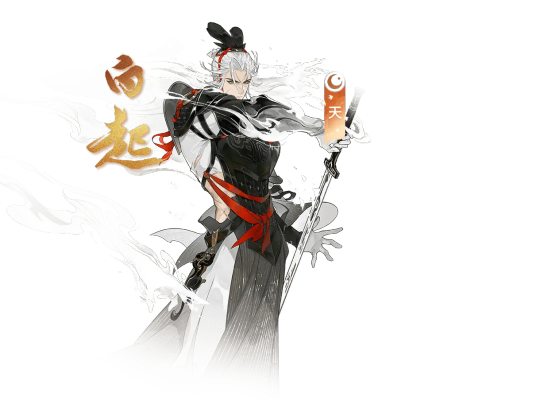
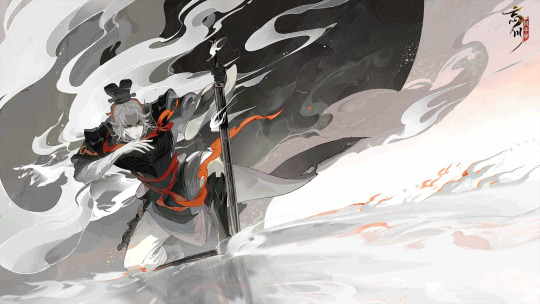

c. 332 BC –c. 257 BC
Military general of Qin (Warring States), whose victory paved way for the establishment of the Qin Dynasty
Extremely high kill count
Song: Qi Zhan Ling
Also appears in: Kuang Gu Hui Xiang
In-game rarity: 天
墨翟 | Mo Di | Mặc Địch
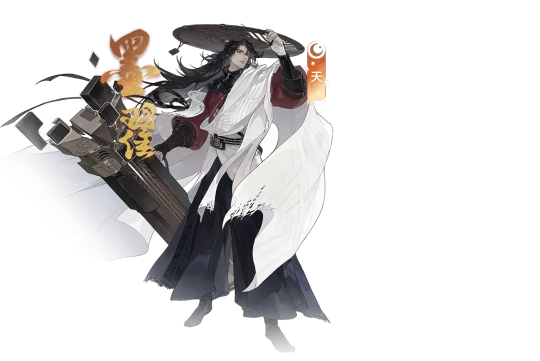

c. 470 BCE – c. 391 BCE
Also known as Mozi
Philosopher, founder of Mohism
Talented in carpentry
Song: Mo Yin Xia Sheng
In-game rarity: 天
公输班 | Gongshu Ban | Công Du Ban

c. 507 BCE – 444 BCE
Also known as Lu Ban
Carpenter, engineer, inventor of several things including the saw
Song: N/A
Also appears in: Mo Yin Xia Sheng
In-game rarity: 天
庄周 | Zhuang Zhou | Trang Chu

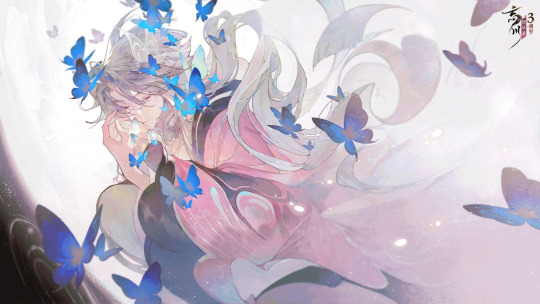
c. 369 BCE - c. 286 BCE
Also known as Zhuangzi / Chuang Tzu
Philosopher, author of Zhuangzi, established the foundation of Taoism
Song: N/A
In-game rarity: 天
0 notes
Photo


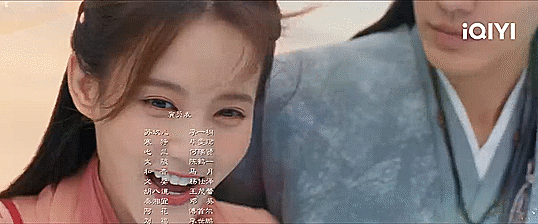
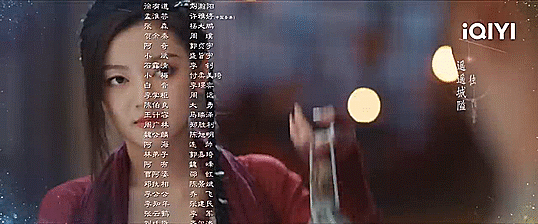


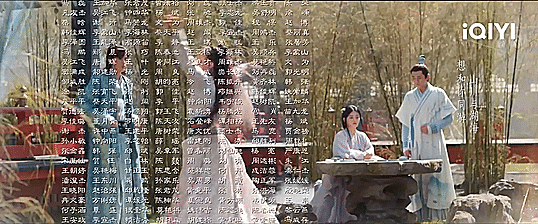

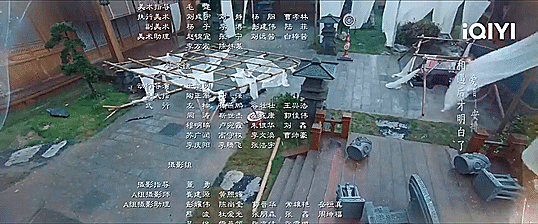

Cdrama: Warm on a Cold Night (2023)
Gifs of Ending of cdrama “Warm on a Cold Night”
【FULL】 李一桐化身飒气女捕快 携手毕雯珺高能探案 | 九霄寒夜暖 Warm on a Cold Night EP1 | 爱奇艺华语剧场
Watch this video on Youtube: https://www.youtube.com/watch?v=OMN3EL9HBBE



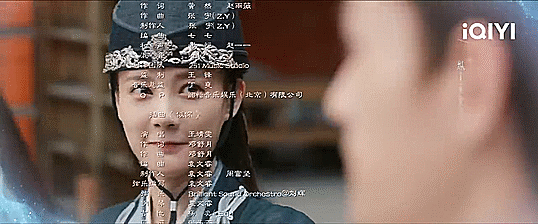


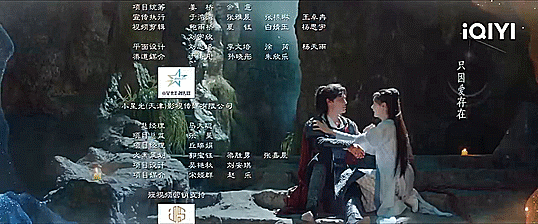
#Warm on a Cold Night#九霄寒夜暖#Warm Cold Night in the Nine Heavens#Jiu Xiao Han Ye Nuan#2023#Viki#iQiyi#youtube#cdrama#chinese drama#1st episode#episode 1#Li Yi Tong#Bi Wen Jun#Chen He Yi#He Rui Xian#Yang Shi Ze#Wang Mao Lei#Ma Yue#Deng Ying#Sonya Fu#Li Jing Yi
2 notes
·
View notes
Text
Which Pro Go Players Will Advance in the Intense National Tournament?
<h1>Top Go Players Face Off in Tournament!</h1>
<p>The preliminary rounds of the 2023 Chinese Go National Team Champion Cup tournament just wrapped up. Sixteen of China's best Go players battled it out for a spot in the next stage. Let's take a closer look at some of the exciting matches!</p>
<h2>Gu Zihao Defeats Rival Tu Xiaoyu</h2>
<p>Gu Zihao, the recent winner of another big tournament, faced off against Tu Xiaoyu. Gu Zihao jumped out to an early lead. But Tu Xiaoyu fought back hard! At one point, they were tied up. But when it really mattered, Gu Zihao played super skillfully to hang on for a close 3.5 point win.</p>
<h2>Ke Jie Dominates Han Yizhou</h2>
<p>As the top-rated player, Ke Jie faced Han Yizhou. Ke Jie seized an opportunity early on to gain the upper hand. From there, he cruised to an easy victory over Han Yizhou. It looks like Ke Jie will be tough to beat!</p>
<h2>Xie Erhao Knocks Out Yang Dingxin</h2>
<p>Yang Dingxin has been on a roll recently. But against Xie Erhao, his fortunes changed. Yang Dingxin played well at first. But some mistakes late on gave Xie Erhao his chance. Xie Erhao capitalized to pull off an awesome comeback win.</p>
<h2>Shi Yue Ends Li Xuanhao's Hopes</h2>
<p>Li Xuanhao has struggled for form as of late. Against Shi Yue, things didn't get much better. Shi Yue jumped ahead early and kept the pressure on. Even though Li Xuanhao fought hard, Shi Yue was too tough to beat. Another tournament and Li Xuanhao is out earlier than hoped.</p>
<p>The next stage of matches kicks off tomorrow. Be sure to tune in to see who advances!</p>
0 notes
Text

Consider Chaos Series
Fandom: Avatar the Last Airbender
Author: AvocadoLove
Rating: Teen
Warnings: Violence
Word Count: 55,463
Characters: Zuko, Vaatu, Toph Beifong, Sokka, Jeong Jeong, Katara, Aang, Haru, Yue, Yugoda, Wan Shi Tong, Appa
Tags: Avatar Zuko, Chaos Avatar Zuko, Earthbending & Earthbenders, Earthbender Zuko, Zuko is an Awkward Turtleduck, SpiritualSpirits, Zuko learning the meaning of Earth, Toph as Zuko's Earthbending Master, Sort Of, Alternate Universe - Canon Divergence, Zuko-centric, The Dark Spirit, Unreliable Narrator, Unreliable Narrator who is also an angry rug, Protective Sokka, Badass Sokka, Sokka is the spirit-sensitive equivalent to force-sensitive Han Solo, Chaos, Protective Zuko, Hurt/Comfort, Spirit Guides, Chaos is a ladder
Consider The Wildflowers
AU during the Siege of the North.
When the moon was briefly killed, the lines between the spirit world and the material world grew thin. It became possible for someone to cross the barrier.
Or,
Zuko meets the ally he never knew he needed, in the form of a dark angry rug.
Consider The Earth
Now that Zuko has fused with Vaatu to become the Avatar of Choas to rival Raava's Order, he must seek out an Earthbending Master.
But even the first Avatar had to first visit the Lion Turtles to access the elements, and the Lion Turtles have been gone for millennia.
Luckily, Vaatu has a plan.
Consider The Gaang
Sokka knows something has shifted in the world since the Siege of the North... but he can't quite put his finger on what it is.
Consider The Moon
Learning to bend his opposite element was always going to be difficult, but if Zuko can’t figure out how to do it by morning, he and Toph will die.
He’ll have to petition the spirits, but he may already be in too deep. Water is as changeable as the phases of the moon, and the gift he receives will be more than he bargained for.
Consider The Bison
The ripple effect of the Chaos Avatar returning to to the material world is starting to show. As a result, the Gaang find themselves deep trouble.
Meanwhile, Zuko discovers an unexpected ally, and uncovers a secret kept hidden for one-hundred years.
Consider The Spirits
It's time for the Avatars to meet.
(Also, Sokka might be having an existential crisis.)
#atla#zuko#toph#sokka#atla:book 1#atla:chaos avatar#chaos avatar!zuko#atla:fluff#spiritsensitive!sokka#wip#50to100k#teen#fic rec
0 notes
Text
Nampō Roku, Book 7 (42, 43, 44): the Sketches for Entries 39, 40, and 41.

42) Yojō-han tomoshibi no oki-dokoro [四疊半ノ置所]¹.
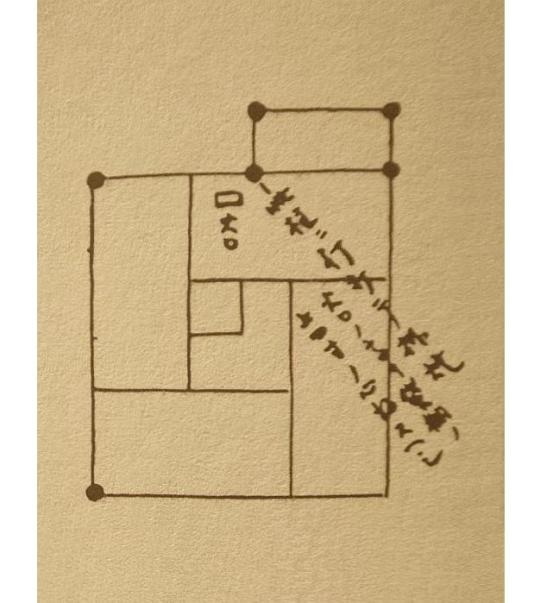
[The writing reads: written on a diagonal, kono-hashira kugi-butsu kake-tomoshibi (此柱 釘打掛灯)², hi-guchi no takasa fukuro-dana no ue yon-sun no kokoro-e-subeshi (火口ノ高サ袋棚ノ上四寸ノ心得スヘシ)³; center, hi-guchi (火口)⁴.]
〽 Go-shaku-toko no toki kaku-no-gotoki [五尺床ノ時如此]⁵.
〽 Tankei oki-kata yoshi, Shukō no shin-no-yojō-han, Engo no ō-haba wo kakerare-shi yue ikken-toko nari, tankei mo sono toki made ha okazu, shokudai nari, Jōō yojō-han, toko-naki mo ari, toko wo tsukerare-taru ha go-shaku nari [短檠置方ヨシ、珠光ノ眞ノ四疊半、圜悟ノ大幅ヲ掛ラレシ故一間床也、短檠モ其時マデハ不置、燭臺也、紹鷗ノ四疊半、床ナキモアリ、床ヲ付ラレタルハ五尺也]⁶.
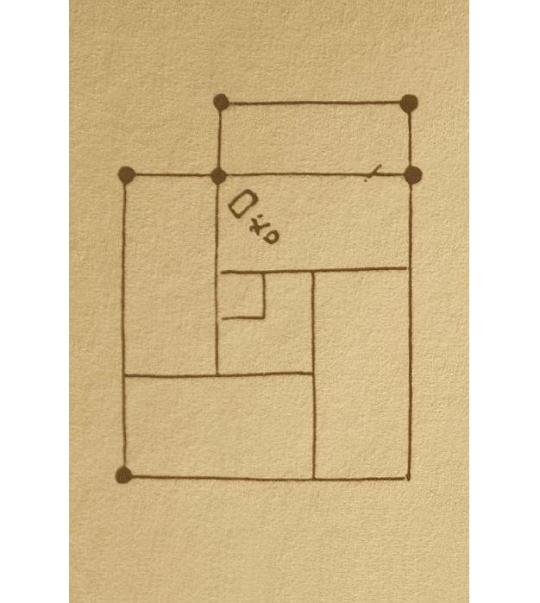
[The writing reads: hi-guchi (火口)⁷.]
〽 Ikken-toko no toki, Sōkyū kaku-no-gotoki wo okaruru, Kyū ha tsu[w]i ni ji-ka ni te, sumi-kakete okare-taru wo mizu, aru-toki, Yodo-ya no yojō-han ikken-toko ni te ari-keru ni tōdai oki-taru ni, Kyū mi-tamaite, kore ni te koso aru-beki to no tamau, shikaraba sumi-kake ha konomarezu to oboe ni, Yodo-ya ha Kyū koni no montei nari [一間床ノ時、宗及如此ヲカルヽ、休ハツヰニ自家ニテ、スミカケテヲカレタルヲ見ズ、アル時、淀屋ノ四疊半一間床ニテ有ケルニ燈臺置タルニ、休見玉テ、コレニテコソアルベキトノ玉フ、シカレバスミカケハ不被好ト覺ニ、淀屋ハ休懇意ノ門弟也]⁸.

43.1) Fuka san-jō furu-zama [深三疊古様]⁹.

[The writing reads (right to left): kono tokoro kakemono (此所カケ物)¹⁰; kono kabe chū-dan kōshi ari, mata chū-dan made ni shite, hashira nashi ni, ita no furo-saki mo ari, takasa kama no mie-kakure (此カヘ中段カウシアリ、又中段迄ニシテ柱ナシニ、板ノ風爐サキモアリ、高サ釜ノ見ヘカクレ)¹¹; isshaku go-sun ita (一尺五寸板)¹²; ro wo koko ni kirareshi ha, isshaku-yon-sun kiwamarite ato no koto nari, hajime ha ita no ue ni daisu no gotoku, kane no furo mizusashi nado gu-shite oki-shi nari (爐ヲコヽニ切ラレシハ、一尺四寸キハマリテ後ノコト也、初ハ板ノ上ニ臺子ノコトク、カネノ風爐・水サシナト具シテヲキシナリ)¹³; kake-tomoshibi koko ni (カケ灯コヽニ)¹⁴.]

43.2) Ato kaku-no-gotoki ni mo [後如此ニモ]¹⁵.
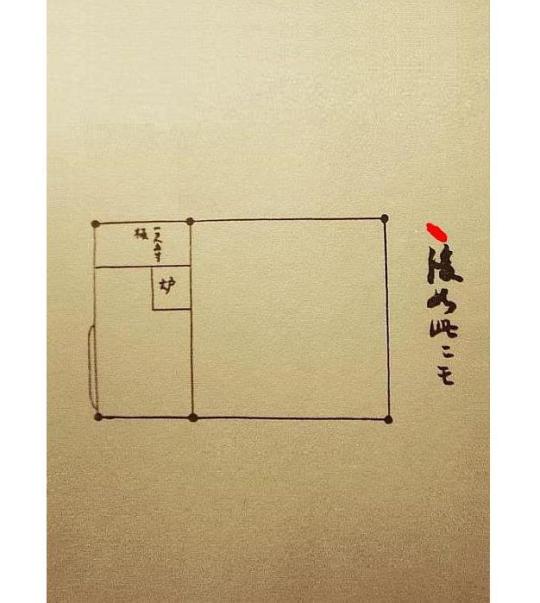
[The writing reads: isshaku go-sun ita (一尺五寸板)¹⁶; ro (炉)¹⁷.]

44.1) Naga-yojō furu-zama [長四疊古様]¹⁸.
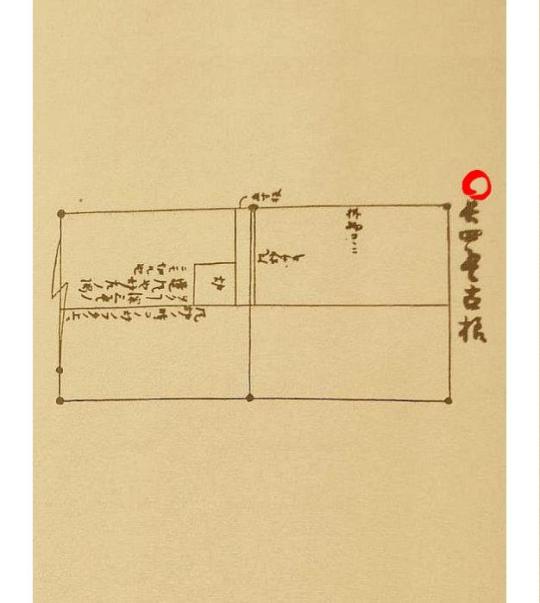
[The writing reads, from right to left: kakemono koko ni (カケ物コヽニ)¹⁹; furosaki (風炉サキ)²⁰; go-sun ita (五寸板)²¹; ro (炉)²²; furo no toki kono ro no futa no ue ni oku-koto fuka-sanjō no i-fū nari (風炉ノ時コノ炉ノフタノ上ニヲク事深三疊ノ遺風也)²³, ro hidari no sumi ni mo kiru nari (炉左ノ隅ニモ切ル也)²⁴.]

44.2) Ato kaku-no-gotoki ni mo [後如此ニモ]²⁵.
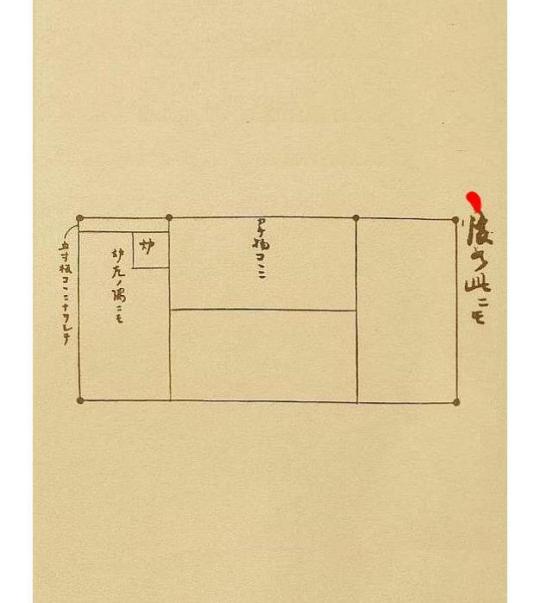
[The writing reads, from right to left: kakemono koko ni (カケ物コヽニ)²⁶; ro (炉)²⁷; ro hidari no sumi ni mo (炉左ノ隅ニモ)²⁸; go-sun-ita koko ni naoshite (五寸板コヽニホシテ)²⁹.]
_________________________
◎ This entry contains the six drawings that graphically memorialize the details of entries 39 (Lighting the 4.5-mat Room for the Shoza*), 40 (the Fuka-sanjō [深三疊] Room†), and 41 (the Naga-yojō [長四疊] Room‡). Even though these sketches have already been published in the posts to which they relate, I am repeating them here in order to maintain the series of entries as found in the Enkaku-ji manuscript version of Book Seven of the Nampō Roku.
In addition, I have included a translation of a related entry, from the Sumibiki no uchinuki-gaki・tsuika [墨引之内拔書・追加 ] (A Record of Excerpted Passages for Internal Use, Supplementary Material)**, that deals with certain points related to the three- and four-mat rooms, and their seating arrangements. This appears as an appendix, at the end of this post.
___________
*The URL for the post of entry 39 is:
https://chanoyu-to-wa.tumblr.com/post/702018933860040704/namp%C5%8D-roku-book-7-39-lighting-the-45-mat
† The URL for the post of entry 40 is:
https://chanoyu-to-wa.tumblr.com/post/702653075106742272/namp%C5%8D-roku-book-7-40-the-deep-three-mat
‡ The URL for the post of entry 41 is:
https://chanoyu-to-wa.tumblr.com/post/703015465673441280/namp%C5%8D-roku-book-7-41-the-long-four-mat-room%C2%B9
**In these translations, I usually refer to this pair of documents as the Book of Secret Teachings, and Second Book of Secret Teachings (the original Sumibiki no uchinuki-gaki only has 10 entries; most of the material that has drawn our attention is found in the much more expansive supplementary book, which contains 54 entries) for the sake of simplicity.
■ The translations found in footnotes 1 to 29 are pretty perfunctory, since everything has been discussed, in detail, in the posts (the URLs of which are given above) where these drawings first appeared. I have only provided explanations where circumstances seemed to make this appropriate.
¹Yojō-han tomoshibi no oki-dokoro [四疊半ノ置所].
This means the place to put the lamp in the 4.5-mat room.
²Kono-hashira kugi-butsu kake-tomoshibi [此柱 釘打掛灯].
“[If] a hook has been nailed into this pillar, a hanging lamp [may be hung here].”
³Hi-guchi no takasa fukuro-dana no ue yon-sun no kokoro-e-subeshi [火口ノ高サ袋棚ノ上四寸ノ心得スヘシ].
“Regarding the height of the hi-guchi, you should understand that it should be 4-sun above the fukuro-dana.”
⁴Hi-guchi [火口].
Hi-guchi refers to the place where the wicks extend above the rim of the lamp; the place where the flame is burning. The meaning here is that the hi-guchi should face toward the ro.
⁵Go-shaku-toko no toki kaku-no-gotoki [五尺床ノ時如此].
“When [the room has] a 5-shaku toko, it is like this.”
In other words, the drawing illustrates the arrangement in a room that has a 5-shaku toko.
⁶Tankei oki-kata yoshi, Shukō no shin-no-yojō-han, Engo no ō-haba wo kakerare-shi yue ikken-toko nari, tankei mo sono toki made ha okazu, shokudai nari, Jōō yojō-han, toko-naki mo ari, toko wo tsukerare-taru ha go-shaku nari [短檠置方ヨシ、珠光ノ眞ノ四疊半、圜悟ノ大幅ヲ掛ラレシ故一間床也、短檠モ其時マデハ不置、燭臺也、紹鷗ノ四疊半、床ナキモアリ、床ヲ付ラレタルハ五尺也].
“The way the tankei has been placed is suitable. In Shukō's shin [眞] 4.5-mat room, because he wanted to hang the wide scroll [that had been written by] Engo, [the room] had a 1-ken toko. Up to that time, the tankei was still not placed [in the tearoom]; [they] used a candlestick.
“Jōō also had a 4.5-mat room that did not have a toko. And when he wanted to attach a toko, it was 5-shaku [wide].”
⁷Hi-guchi [火口].
Again, the word hi-guchi indicates the orientation of the tankei. In this case, it is placed on a diagonal, so that the lamp gives light not only to the ro, but to the interior of the toko as well.
⁸Ikken-toko no toki, Sōkyū kaku-no-gotoki wo okaruru, Kyū ha tsu[w]i ni ji-ka ni te, sumi-kakete okare-taru wo mizu, aru-toki, Yodo-ya no yojō-han ikken-toko ni te ari-keru ni tōdai oki-taru ni, Kyū mi-tamaite, kore ni te koso aru-beki to no tamau, shikaraba sumi-kake ha konomarezu to oboe ni, Yodo-ya ha Kyū koni no montei nari [一間床ノ時、宗及如此ヲカルヽ、休ハツヰニ自家ニテ、スミカケテヲカレタルヲ見ズ、アル時、淀屋ノ四疊半一間床ニテ有ケルニ燈臺置タルニ、休見玉テ、コレニテコソアルベキトノ玉フ、シカレバスミカケハ不被好ト覺ニ、淀屋ハ休懇意ノ門弟也].
“When [the room] had a 1-ken toko, Sōkyū wanted to place [the tankei] like this. But [as for] Rikyū, [the tankei] was never seen to be placed so that it rested in the corner [of the mat] in his own home.
“On one occasion, in Yodo-ya’s 4.5-mat room with a 1-ken toko, the tōdai was placed out in the aforementioned way. When [Ri]kyū saw it, he declared ‘this is exactly the way it should be done!’
“In light of this, perhaps we should consider that he did not [really] like [the way Sōkyū had arranged it]. Yodo-ya [Gentō] was one of [Ri]kyū’s most intimate disciples.”
⁹Fuka san-jō furu-zama [深三疊古様].
“The old style of the deep 3-mat [room].”
¹⁰Kono tokoro kakemono [此所カケ物].
“The kakemono is [hung] in this place.”
¹¹Kono kabe chū-dan kōshi ari, mata chū-dan made ni shite, hashira nashi ni, ita no furo-saki mo ari, takasa kama no mie-kakure [此カヘ中段カウシアリ、又中段迄ニシテ柱ナシニ、板ノ風爐サキモアリ、高サ釜ノ見ヘカクレ].
“In the middle of this wall is a lattice-work. But again, with respect to this, including the making of [the lattice in] the middle, when the pillars [that would support the wall] are absent, a furosaki made from boards can also be [used].
“It should be high enough to hide the kama from view.”
¹²Isshaku go-sun ita [一尺五寸板].
“The board [measures] 1-shaku 5-sun.”
¹³Ro wo koko ni kirareshi ha, isshaku-yon-sun kiwamarite ato no koto nari, hajime ha ita no ue ni daisu no gotoku, kane no furo mizusashi nado gu-shite oki-shi nari [爐ヲコヽニ切ラレシハ、一尺四寸キハマリテ後ノコト也、初ハ��ノ上ニ臺子ノコトク、カネノ風爐・水サシナト具シテヲキシナリ].
“As for wanting to cut the ro here, this only appeared after the ro was fixed at 1-shaku 4-sun [square].
“Originally, a metal furo, mizusashi, and so on, were [all] placed on top of the board, just like [on] the daisu.”
¹⁴Kake-tomoshibi koko ni [カケ灯コヽニ].
“A hanging lamp is [suspended] here.”
¹⁵Ato kaku-no-gotoki ni mo [後如此ニモ].
“After, [the fuka-sanjō room] was also [arranged] like this.”
¹⁶Isshaku go-sun ita [一尺五寸板].
“The board [measures] 1-shaku 5-sun.”
¹⁷Ro [炉].
The ro is shown on the right. However, it was also permissible to cut it on the left side of the mat, adjoining the wall of the katte.
¹⁸Naga-yojō furu-zama [長四疊古様].
“The old style of the long 4-mat [room].”
¹⁹Kakemono koko ni [カケ物コヽニ].
“The kakemono is [hung] here.”
²⁰Furosaki [風炉サキ].
This furosaki could refer either to a free-standing screen made of two boards, or to one (or more) boards suspended between a pair of pillars. In either case, the height should be equal to that of the lid of the kama (when arranged on the furo).
²¹Go-sun ita [五寸板].
“The board [measures] 5-sun [wide].”
²²Ro [炉].
The ro is shown as being cut on the right side of the mat. While this was the orthodox position (according to the classical understanding that the fire should always be located between the part of the room where the guests were seated, and the mizusashi and chaire), it was also permitted for the ro to be cut on the left side (which corresponded with its position on the ji-ita of the daisu).
²³Furo no toki kono ro no futa no ue ni oku-koto fuka-sanjō no i-fū nari [風炉ノ時コノ炉ノフタノ上ニヲク事深三疊ノ遺風也].
“When the furo is being used, there is the case where it is placed on top of this lid of the ro. This was a practice of long standing that began with the fuka-sanjō.”
²⁴Ro hidari no sumi ni mo kiru nari [炉左ノ隅ニモ切ル也].
“The ro may also be cut in the left corner [of the mat, in front of the board].”
²⁵Ato kaku-no-gotoki ni mo [後如此ニモ].
“After, [the naga-yojō room] was also [arranged] like this.”
²⁶Kakemono koko ni [カケ物コヽニ].
“The kakemono is [hung] here.”
²⁷Ro [炉].
This was the more common location for the ro [based on the argument that the fire should be moved closer to the guests when the weather was cold].
²⁸Ro hidari no sumi ni mo [炉左ノ隅ニモ].
“The ro may also be [cut] in the left corner [of the utensil mat].”
²⁹Go-sun-ita koko ni naoshite [五寸板コヽニホシテ].
“The go-sun-ita is repositioned here.”
“Repositioned” (naoshite [直して]) because, in the original form of the room, the board appeared to be oriented between the utensil mat and the mat that was functioning as the tokonoma. According to that idea, the board should have been found on the right side of the mat. However, that is mistaken. The board should be found at the end of the utensil mat, to make it seem to be an inakama-datami.
==============================================
❖ Appendix: Entry 39 from the Second Book of Secret Teachings.
Because the deep 3-mat room was originally [just] the [enclosed] veranda of Jōō's sitting room, there was only one way [for the guests] to advance [through the room]³⁰. Later this [problem] was resolved [by changing the orientation of the mats]; but even if this gave [the guests] more freedom [to move about]³¹, it did not really solve [the problem]³². As a result, in the present day [the three-mat room] has largely been discarded³³.

० The deep three-mat room:

〽 (①) If the shōkyaku [takes his seat] here, his position will be the same as when the room has an ordinary mukō-ro³⁴.
〽 (②) If [the guests] take their seats as shown [in this drawing, with the shōkyaku seated in the spot indicated near the katte-guchi], the host will have appropriate access [to all of them]³⁵.
〽 If, during the furo season, [the utensils are arranged] only on the board, [the host] will not be able to gain access to [all of the guests]³⁶.
〽 In any case, it is appropriate for the shōkyaku to sit near the katte-guchi (as shown in this sketch), during both the sho[za], and the go[za]³⁷.

० The long four-mat room:

〽 When the host is serving the guests, there is no way for [him] to gain access to the [guest in the] last seat³⁸. Consequently, the shōkyaku should undertake to act as his intermediary, passing things along to the [person in the] last seat³⁹ -- because, otherwise, there will be no way for the host to be able to serve [that guest]⁴⁰.
[A guest who understands] such [things] is what we mean when we say that a “man of experience” enters [the tearoom]⁴¹.
_________________________
³⁰Fuka-sanjō ha Jōō i-ma no engawa naru yue, ippō agari nari [深三疊ハ紹鷗居間ノ椽カハナル故、一方アカリナリ].
Jōō i-ma no engawa [紹鷗居間の縁側]: i-ma [居間] means a living room, a residential room, or a sitting room (a room that could be used to receive guests); engawa [椽カハ = 縁側] usually means a porch or veranda, but here it seems to refer to a sort of room created by arranging mats on a veranda, which are then enclosed by banks of shōji along the exposed sides to protect them from the weather*. This space was then used as a dedicated tearoom.
Fuka-sanjō ha Jōō i-ma no engawa naru yue [深三疊は紹鷗居間の縁側なるゆえ] means “because the deep 3-mat room was originally (just) the (enclosed) veranda of Jōō's sitting room....”
Ippō agari nari [一方上がりなり] means something like “there was only one way to advance (into the room).”
In other words, due to the limited space available on the preexisting veranda, the area of the mats available for the guests to enter were limited to a single line. Thus, there would be no room for two-way traffic. Once a person moved to the end of this line of mats, and he was followed by others, he could not get out again unless the other guests left the room first.
__________
*However, according to Kotobank [コトバンク] https://kotobank.jp/, this kind of enclosed veranda only appeared during the first half of the seventeenth century (jū-shichi seiki zenhan ni fuki hanashi no irigawaen kara naibu ni torikoma reta engawa ni henka shite iru [17世紀前半に吹き放しの入側縁から内部に取り込まれた縁側に変化している]). This would make the argument that Jōō purportedly enclosed his veranda to create this kind of room an anachronism -- a concept possibly generated by the machi-shū to give historical legitimacy their 3- and 4-mat rooms.
³¹Ato ni naoshite jiyū ni shitaru jūkyo mo aredomo [後ニナホシテ自由ニシタル住居モアレドモ].
Ato ni naoshite [後に直して] means later this (problem) was resolved (by changing the orientation of the mats so that the utensil mat was perpendicular to the two mats on which the guests would sit).
Jiyū ni shitaru jūkyo mo aredomo [自由にしたる住居もあれども] means even if (this) were done so that (the guests) would be free (to move about as they wished)....
³²Jū-bun naki yue [十分ニナキユヱ].
Ju-bun ni nai yue [十分にないゆえ] means this was not enough.
In other words, while rearranging the room and so give the guests free reign to move around the two mat area was an improvement over the original form of the three-mat room, it still meant that, regardless of how the mats were arranged, one of the guests would still be sitting within the same one-mat space as the kakemono. Thus, this was not ideal.
Apparently, the argument that is being made is that, because this 3-mat area was being appended to the outward-facing side of Jōō's preexisting 4.5-mat reception room, he was thereby limited with regard to the length of the room -- which could not exceed the width of the room to which it was attached (namely 9-shaku 4-sun 5-bu, or a mat and a half).
³³Tō-sei chari-tari [當世捨リタリ].
Tō-sei [當世] means in the present day (i.e., the early Edo period, when this text was written).
Shari-tari [捨りたり]: shari [捨り = 捨離] means to abandon (specifically, all worldly desires), so here shari-tari seems to be roughly equivalent to sute-tari [捨てたり], and so means that the three-mat room had largely been relegated to the dustbin of history by the time this text was written. It was no longer used, because it could not fully free itself from the danger of inconveniencing the guests.
³⁴Koko ni shōkyaku tsugi-taraba tsune no mukō-ro no mi-gamae [コヽニ上客ツキタラバ常ノ向炉ノ身構].
Tsugi-taraba [次たらば] means to want to sit beside, will sit beside.
In other words, if the shōkyaku decides to sit in that place*, everything will be done as if they were in a 2-mat room with a mukō-ro.
__________
*This seems to mean that the shōkyaku enters the room last (so that he will take his “rightful” seat in front of the toko). Then, after he has finished inspecting the toko, he moves onto the next mat (so that the other two guests will have to move closer to the lower end, so that all three are sitting on the same mat).
³⁵Kaku-no-gotoki za-tsuki-sōraeba shu no mi-gamae hirakite yoshi [如此座着候得バ主ノ身構ヒラキテヨシ].
Kaku-no-gotoki za-tsuki-sōraeba [かくの如き座着き候えば] means if the guests all take their seats as shown (in the drawing)....
Shu no mi-gamae hirakite yoshi [主の身構開きてよし ] means that the host will have suitable access (to all of the guests); the host will be able to serve them appropriately.
³⁶Ita bakari ni te furo no toki ha hiraku-koto nashi [板斗ニテ風炉ノ時ハヒラクコトナシ].
Ita bakari ni te furo no toki [板ばかりにて風炉の時] means when, during the season of the furo, (all of the utensils) are (arranged only) on the mukō-ita [向板]*....
Hiraku-koto nashi [開くこと無し] means (the host) will not have access (to all of the guests).
This is because, when the utensils will be arranged on the board, not only are the furo and kama placed out during the shoza, but also the mizusashi, shaku-tate, koboshi, and futaoki -- just as if these things were arranged together on the o-chanoyu-dana (from which this arrangement was actually derived). As a result, the host will be unable to pass as close to the board as he could when there was nothing on it.
__________
*The large board measuring 3-shaku 1-sun 5-bu by 1-shaku 5-sun.
³⁷Shōkyaku to-kaku katte-guchi no kata ni zu no gotoku sho-go tomo ni ite yoshi [上客トカク勝手口ノ方ニ図ノコトク初後トモニ居テヨシ].
Tokaku [とかく] means anyways, in any case, at any rate.
Katte-guchi no kata ni [勝手口の方に] means in the place closest to the katte-guchi.
Zu no gotoku [図の如く] means as is show in the sketch.
Sho-go tomo ni [初後ともに] means during both the shoza and (also) the goza.
Ite yoshi [居てよし] means it is appropriate to remain (in that seat).
³⁸Shu tamai-suru toki ha matsu-za made tōru-beki michi nashi [主給スル時ハ末座マデ通ルベキ道ナシ].
Shu tamai-suru toki [主給いする時] means when the host is serving the guests -- the reference is to his serving of the kaiseki (and specifically to things like handing each guest his own tray of food, pouring sake for each of the guests, and so forth).
Matsu-za made tōrubeki michi nashi [末座まで通るべき道なし] means there is no path for (the host) to gain access to the (guest in the) last seat.
³⁹Shōkyaku tori-tsukite matsu-za [h]e yaru nari [上客取次テ末座ヘヤルナリ].
Shōkyaku tori-tsukite [上客取り次ぎて] means the shōkyaku (should) act as an intermediary; the shokyaku should pass (that thing) along.
Matsu-za [h]e yaru [末座へ遣る] means pass (it) along to (the person in) the last seat.
In other words, with respect to something like the tray of food, the shōkyaku should receive it from the host and then pass it over to the last guest; and as for the pouring of sake, the shōkyaku should request the chōshi [銚子] or tokuri [徳利] from the host, and then pour for the last guest.
⁴⁰Sa nakereba shōkyaku [h]e shu no kyuji-jika ni watasu-koto narazaru-koto nari [サナケレバ上客ヘ主ノ給仕直ニ渡スコトナラザルコトナリ].
Sa nakereba [さなければ] means otherwise.
Shōkyaku [h]e shu no kyuji-jika ni watasu-koto narazaru-koto [上客へ主の給仕直に渡すことならざること] means if the host does not pass this task over to the shōkyaku, the host will be unable to serve (the last guest).
⁴¹Kōsha no iru to iu ha kayō no koto nari [功者ノ入ルト云フハカヤウノコトナリ].
Kōsha no iru to iu ha [功者の入ると云うは] means when we speak about a man of experience entering (the tearoom)....
Kayō no koto nari [斯様のことなり] means that is what we are talking about.
0 notes
Photo
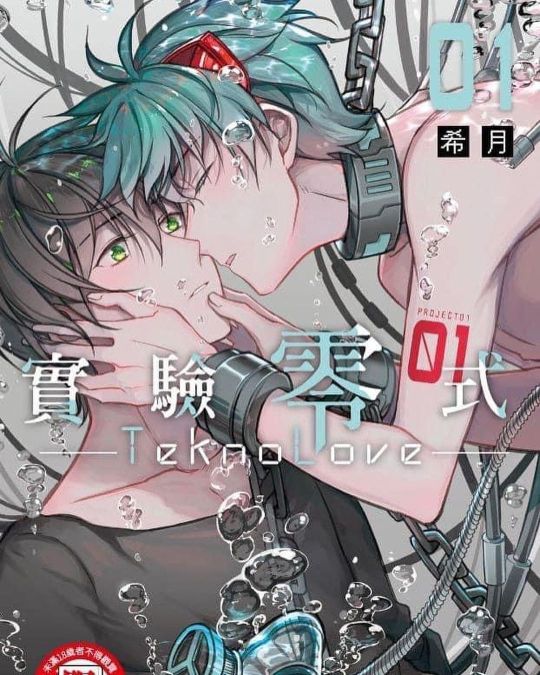
Title: TeknoLove-Shi Yan Ling Shi Chinese: TeknoLove-實驗零式 Creator: 希月(Xi Yue) Category: #Manhua Status: #Ongoing Chapters: 3 volumes Genre: #SciFi; #SliceofLife; #Smut Tags: #ChildhoodFriends; Guilt; Dead Friend; Experiments Description: Shi Sheng, Han Yu and Xiao Hai are childhood friends. However, an accident took Xiaohai away, which left a deep wound in Shisheng's heart. Years later, Shisheng who lived an ordinary tech house life, suddenly received an invitation from a mad mad scientist, Professor U’s robot – Yi Shi, one day. Under Professor U’s threat, Shi Sheng is required to complete a “Love Experiment” with Yi Shi. The feeling for Xiao Hai kept in the bottom of my heart gradually re-surfaced because of Yi Shi. Shi Sheng also realized that he feels sorry for Han Yu, who had been by his side silently for many years, and the feelings to go beyond friendship... What is the purpose of "Love Experiment"...? Where to Read: English – not available Chinese Bookwalker – https://www.bookwalker.com.tw/product/40893 Readmoo - https://readmoo.com/installment/7409 Renta! - https://tw.myrenta.com/item/127551 https://www.instagram.com/p/CkrjrCmuvLQ/?igshid=NGJjMDIxMWI=
0 notes